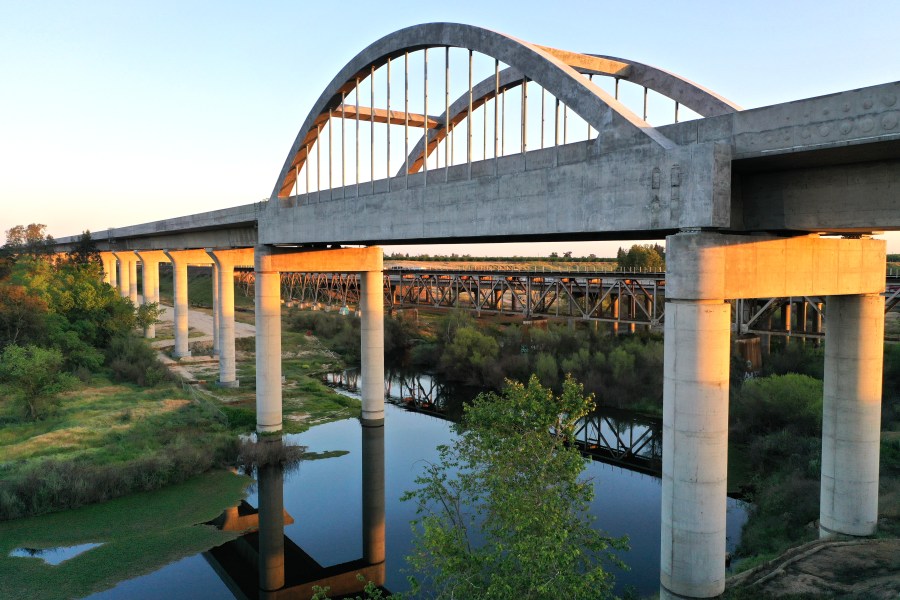The California High-Speed Rail Authority on Thursday announced a plan to accelerate the process of laying the first tracks on the state’s beleaguered infrastructure project.
The Authority’s board of directors approved a process that invites bids from U.S. manufacturers to acquire high-speed rail track and other required system components, officials said.
The materials will be used to install the first miles of electrified track along the California High-Speed Rail route, the first high-speed rail track to be laid in the U.S.
The Authority states that the process is being accelerated and will result in track being laid in 2026.
“Purchasing the track and materials needed to launch the nation’s first high-speed track and systems installation within the next year is a major milestone,” said Authority CEO Ian Choudri. “Today, we are taking concrete actions to build faster, smarter, and more economically to deliver a modern, high-speed rail system that promotes economic mobility, affordable housing, and a cleaner environment throughout the state.”
It comes as completion nears on a 150-acre rail staging yard in Kern County near the southernmost end of the Central Valley segment. The staging yard will allow freight trains to receive and deliver the materials directly to the point of installation, CAHSR officials said.

U.S. manufacturers will be able to bid in sex separate procurement packages as crews begin laying track on the 119-mile segment currently construction. Materials, including rail, ties, fiber optic cables and catenary poles, will be purchased entirely with state funds, with an approved cost of $507 million to be awarded to multiple vendors.
The lack of track having been laid has been a major point of contention for opponents of the project, including current Transportation Secretary Sean Duffy. After the Department of Transportation announced it was pulling more federal funding for California High-Speed Rail, Duffy criticized the delayed process.

“In twenty years, California has not been able to lay a single track of high-speed rail,” Duffy said earlier this week. “Joe Biden and Pete Buttigieg didn’t care about these failures and dumped hundreds of millions of dollars into the state’s wish list of related fantasy projects.”
Industry experts and supporters of the California High-Speed Rail have pushed back on the notion, arguing that track-laying realistically happens late in the overall construction process, and is an easier endeavor than building bridges and underpasses, or navigating the clerical and legal challenges that have plagued the project.
The Authority has attempted to highlight what parts of system have actually been completed already, including the construction of 57 structures in the Central Valley, with 29 additional structures currently being built. Currently, 171 miles are under design and construction between Merced and Bakersfield, and nearly 70 miles of guideway is complete.
All but 31 miles of the system has received environmental clearance between San Francisco and the greater Los Angeles area, and CAHSR says the project has generated billions in economic activity in the Central Valley.
“Since construction began, the project has created over 15,800 good-paying jobs—most filled by Central Valley residents. Up to 1,700 workers report to high-speed rail construction sites each day,” a news release states.

While the Trump Administration has put the project in its crosshairs, California Gov. Gavin Newsom has taken up advocacy for it, proposing $1 billion annually from the state’s cap and trade program to provide the project with consistent, reliable funding.
Currently, the project’s funding sources are spread out and sporadic. Choudri says a consistent source of funds would allow the Authority to seek financing for the project, further accelerate construction and find new revenue streams.
To track current construction progress on the California High-Speed Rail, you can visit BuildHSR.com.
